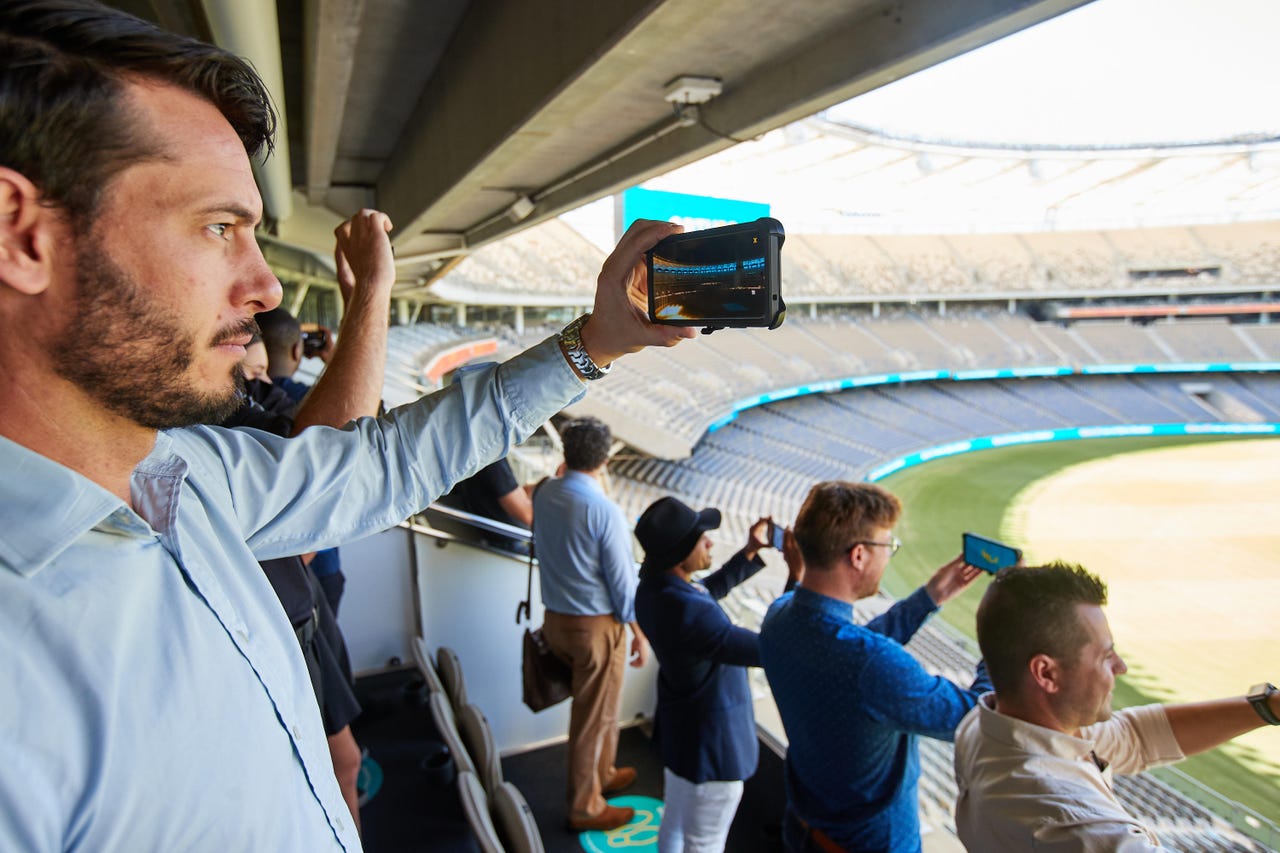Telstra and TPG spend hundreds of millions on mmWave spectrum


The future Australian telcos dream of
Australian carriers revealed on Friday how much they had paid in the recent 26GHz spectrum auction.
First cab off the rank was Telstra, which announced it would be paying AU$277 million over five years for 1000MHz in the 26GHz band.
"We're delighted with the outcome of the auction and while the licenses won't come into effect until around the middle of the year, the ACMA is making available early access licensing which will allow us to use the spectrum even sooner," Telstra CEO Andy Penn said.
Penn also spoke about a dystopic scenario of people attending live sports only to then fix some goggles to their face.
"Imagine watching the Grand Final at the Melbourne Cricket Ground, with your 5G-powered augmented reality goggles overlaying real time player stats, all at the same time as thousands of others are enjoying the game alongside you -- that's the immense bandwidth and speed that mmWave can offer," he said.
ZDNet refuses to imagine it.
Telstra added it would hit 75% population coverage for its 5G network by the end of June, and had over 3,200 live 5G sites around the country.
Elsewhere in the auction, TPG Telecom said it would stump up AU$108 million for spectrum in all available licence areas.
In Sydney, Melbourne, and Perth, the company picked up 400MHz of spectrum, and 600MHz in Brisbane and other metro and regional areas. As a result, the telco said its spectrum holdings had tripled.
"The spectrum will enable us to deliver 5G fixed wireless services as a compelling NBN alternative, and it will also benefit mobile services in high foot-traffic areas such as CBDs," TPG CEO Iñaki Berroeta said.
In total, the Australian Communications and Media Authority (ACMA) offered 2.4GHz of spectrum between 25.1–27.5GHz over 27 areas across Australia, made available in 360 lots across a 15-year term.
Optus said it would pay AU$226 million for 800MHz in Sydney, Melbourne, Brisbane, Perth, Adelaide, Canberra and a "range of regional areas", as well as 600MHz in Hobart and Margaret River.
"Importantly, Optus have secured the best and most highly valued position at the top of the spectrum band in most of the capital cities and regions, which include 'golden GHz' segment supported by both the 28GHz range enabled in US and the 26GHz range to be enabled in Australia," it said.
Optus Networks managing director Lambo Kanagaratnam not only promoted headsets at live sporting events, but also music concerts.
"For enterprise, this spectrum could support remote controlled automation for example robotics in a warehouse or factory, or the creation of a secured private network at a university campus to support thousands of students and academics," he added.
Overall, 358 lots were sold for a total cost of AU$647.6 million, ACMA said, with Dense Air paying AU$28.7 million for two lots in Sydney and Melbourne, and Pentanet paying AU$8 million for four lots in Perth and Margaret River. Telstra picked up 150 lots, Optus gained 116 lots, and TPG bought 86 lots -- typically Telstra gained five lots in each geography, Optus bought four, and TPG paid for three.
In August, the Australian government limited the amount of spectrum a single bidder could pick up to 1GHz.
In December, ACMA announced it had offered the first round of its new area-wide apparatus licences to communications providers for the millimetre-wave bands.
Licences were handed out in the 26GHz and 28GHz bands to SpaceX Starlink, Telstra, Optus, Vocus, Nokia, NBN, Opticomm, MarchNet, Dreamtilt, Field Solutions Group, WorldVu (One Web), Inmarsat, Viasat, O3B/SES, and New Skies Satellites/SES.
NBN did not pick up any spectrum in the latest auction.
Updated Friday April 23 at 9:52am AEST: Added Optus comment and purchases.
Updated Friday April 23 at 11:30am AEST: Added further information from ACMA.
Related Coverage
- Telstra to add low band spectrum to commercial 5G network
- MacTel ends Telstra contract with AU$34m Optus 5G mobile deal
- Samsung carrier business lands in Australia to focus on mmWave
- Optus posts 10Gbps aggregated throughput on 5G site
- Australia's average 5G mobile speed is outpacing 4G by 5.3 times: OpenSignal
- Telstra says it has half of all Australians covered by 5G